Waterfall 4
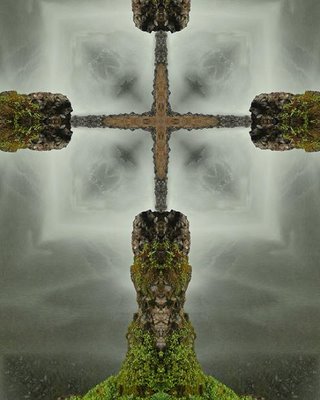 In this spot, it is never quiet. And yet it is always quiet. Quiet is not always measured by decibels.
In this spot, it is never quiet. And yet it is always quiet. Quiet is not always measured by decibels.
"THERE IS NO PLACE WHERE GOD IS NOT." Photo + kaleidoscope effect = Cross
 In this spot, it is never quiet. And yet it is always quiet. Quiet is not always measured by decibels.
In this spot, it is never quiet. And yet it is always quiet. Quiet is not always measured by decibels.
 Every second of every day, water from this Columbia Gorge waterfall descends on this rock, splashing, cascading, shaping. Cool!
Every second of every day, water from this Columbia Gorge waterfall descends on this rock, splashing, cascading, shaping. Cool!
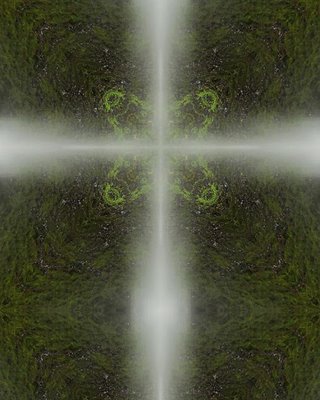 If it's hot where you are today, just meditate on this picture and imagine yourself sitting under the cool, refreshing spray.
If it's hot where you are today, just meditate on this picture and imagine yourself sitting under the cool, refreshing spray.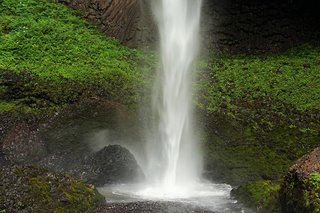
 On the Oregon side of the Columbia River gorge, there is a series of gorgeous waterfalls. To see some of them, you must take a modest hike, while others are quite close to the highway.
On the Oregon side of the Columbia River gorge, there is a series of gorgeous waterfalls. To see some of them, you must take a modest hike, while others are quite close to the highway.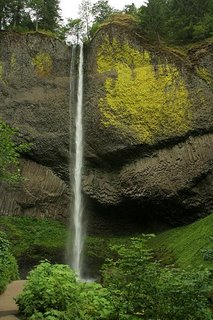
 Early this summer, the sight of this pickup truck elicited the obvious response: "I don't think we're in Nebraska any more!"
Early this summer, the sight of this pickup truck elicited the obvious response: "I don't think we're in Nebraska any more!"
Oregon was originally known as "The Webfoot State" before it became "The Beaver State" in 1909. The University of Oregon had a special connection to Walt Disney, who gave his blessing to Donald Duck's relationship with the waterfowl-loving folks in Eugene. They've been the "Ducks" ever since. If you want to read the whole story, click here.
Having a duck as mascot does not automatically strike fear into the hearts of sports opponents, but it does have the advantage of offending no one . . . except the Humane Society which applied pressure to stop bringing live ducks to the games. Ah, well . . .
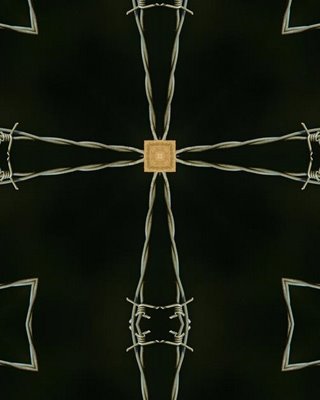 When Jesus said "Blessed are the persecuted" we Christians automatically think about the difficulties of being a Christian in many parts of the world. But "the persecuted" have also included so many others: Jews, Bahai's, Native Americans, Neopagans, Bhuddists, Scientologists, Muslims, Mormoms, Jehovah's Witnesses, and others.
When Jesus said "Blessed are the persecuted" we Christians automatically think about the difficulties of being a Christian in many parts of the world. But "the persecuted" have also included so many others: Jews, Bahai's, Native Americans, Neopagans, Bhuddists, Scientologists, Muslims, Mormoms, Jehovah's Witnesses, and others.
Are ALL the persecuted "blessed"? Certainly nobody feels very blessed while being persecuted, so what did Jesus really mean?
If you have a perspective to share on this, please leave a comment.
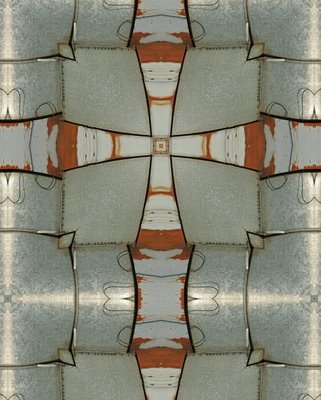 Another example of something old and rusty in which beauty can be found. This silo is near Mt. Angel, Oregon.
Another example of something old and rusty in which beauty can be found. This silo is near Mt. Angel, Oregon.
Dictionaries list two things that can be stored in silos: silage or missiles, the stuff of life, or the stuff of death. Deuteronomy 30:19 says, "Choose life."
 About 10,000 years ago, Native Americans called "Kalapuya" began harvesting camas roots and berries and hunting game here, the place now called the "Willamette Valley." Their name for it was "Chemeka" which means "resting place."
About 10,000 years ago, Native Americans called "Kalapuya" began harvesting camas roots and berries and hunting game here, the place now called the "Willamette Valley." Their name for it was "Chemeka" which means "resting place."
Trappers arrived around 1800 and missionaries a few decades later. A new town was laid out in 1844 which the missionaries named "Salem", after the Hebrew word "shalom" which means "peace."
Beginning in 1843, pioneers from the east began the dangerous cross-country trek on the Oregon Trail to find this place which was said to be a new "Eden."
When you spend time here, you understand how "resting place" and "peace" and "Eden" came to be applied to this land. Today, the valley has far too many very busy people to fully deserve those old labels, but the fertile land still retains its beauty and its call.
See Sabbatical Crosses (and others). Order prints, etc.
 Just minutes before this photo was taken, the forest was dark, for the sun had not yet risen. And just minutes later, the sun's height put most of these in trees again in darkness. So this photo was possible only in the morning, and only for a few minutes.
Just minutes before this photo was taken, the forest was dark, for the sun had not yet risen. And just minutes later, the sun's height put most of these in trees again in darkness. So this photo was possible only in the morning, and only for a few minutes.
One of life's joys is being at the right place at the right time--with or without a camera. None of us lives in that perfect moment at every moment, but when it happens, we say "Aaah!" and we sense the nearness of the Creator.
See Sabbatical Crosses (and others). Order prints, etc.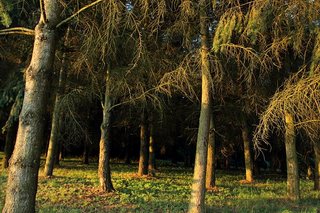
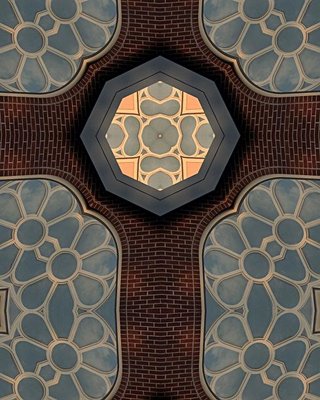 This is the chapel exterior at Queen of Angels Monastery in Mt. Angel, Oregon. Within these walls all 150 Psalms are chanted or read aloud every four weeks. Meeting for worship five times a day makes this possible. Some of the older nuns have therefore sung every word of the Psalter more than 600 times. And in the daily Eucharist, three other Scriptures are read in the traditional 3-year lectionary cycle.
This is the chapel exterior at Queen of Angels Monastery in Mt. Angel, Oregon. Within these walls all 150 Psalms are chanted or read aloud every four weeks. Meeting for worship five times a day makes this possible. Some of the older nuns have therefore sung every word of the Psalter more than 600 times. And in the daily Eucharist, three other Scriptures are read in the traditional 3-year lectionary cycle.
I sometimes hear people say that the Bible isn't very important to Catholics. But the sisters with whom we sojourned for the month of July lived and breathed the Scriptures not only with regularity, but with passion, faith, and deep joy.
See Sabbatical Crosses (and others). Order prints, etc.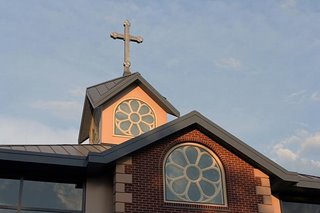
 When you start memorizing Scripture as a child, "God is love" in 1 John 4:8 is a good place to start.
When you start memorizing Scripture as a child, "God is love" in 1 John 4:8 is a good place to start.
Just a few verses earlier, in 1 John 4:1, we are called to "test the Spirits to see whether they are from God." LOVE is that test. Where love is, God is.
All church windows should therefore be "love windows." God's love shines in on God's people, and when we look out those windows to the world, we see the world in the heart-shape of God's love for all--without exception.
Most church windows are either rectangles or neo-Gothic arches. Are there any architects out there who could design "love windows"? What a wonderful and constant reminder that would be!
This is St. Mary's Catholic Church in Mt. Angel, Oregon.
See Sabbatical Crosses (and others). Order prints, etc.
 Those of us in the "believers' church" tradition make a big deal about baptizing only those old enough to believe, understand, and make an "adult" commitment. We disparage infant baptism because babies can't choose it, can't understand it, and can't believe.
Those of us in the "believers' church" tradition make a big deal about baptizing only those old enough to believe, understand, and make an "adult" commitment. We disparage infant baptism because babies can't choose it, can't understand it, and can't believe.
But on the other hand, we have no official or regular way of remembering our baptism. We might remember it when we happen to attend someone else's baptism, but it's possible to attend church for months or years without a baptism reminder.
Not so in Catholic churches, where a font with water is always by the entrance to the sanctuary. Upon entering, you dip your hand in the water and cross yourself as a reminder of your baptism. You do the same as you exit, each and every time you worship.
It's a way--as an adult--of claiming that infant baptism as your own. It's a constant reminder that God--in total grace--loved, called, claimed, accepted, and incorporated you into the community of faith without any "works" on your part. And so every Sunday you dip your hand into the water to pray, "Thank you, God" and also to pray, "God, what You and my parents chose for me, I now choose--again--for myself."
This font of "Reminder Water" (my term, not theirs) , is in St. Mary's Catholic Church, Mt. Angel, Oregon.
 This building in downtown Mt. Angel, Oregon, is for sale. Local residents of this now-abandoned seed-processing business consider it an eyesore that should be torn down.
This building in downtown Mt. Angel, Oregon, is for sale. Local residents of this now-abandoned seed-processing business consider it an eyesore that should be torn down.
 We tend to think of rock as unchanging. But two men who were looking at this rock formation with me said, "This looks really different than it did last year." This rock, visible only at low tide, is often pounded by great ocean waves, and is wearing, crumbling and changing. From one low tide to the next little change is visible. But over time, even the hardest rock crumbles into sand.
We tend to think of rock as unchanging. But two men who were looking at this rock formation with me said, "This looks really different than it did last year." This rock, visible only at low tide, is often pounded by great ocean waves, and is wearing, crumbling and changing. From one low tide to the next little change is visible. But over time, even the hardest rock crumbles into sand.
God once said to Ezekiel, "I will remove their stony heart and will replace it with a natural heart." So the fact that stone can change is Good News!
See Sabbatical Crosses (and others). Order prints, etc.

 Over and over during the last few months as we traveled through the West, I said, "If only we had a geologist here to explain where these rocks came from, how these formations developed, why these colors appeared, when these layers were formed."
Over and over during the last few months as we traveled through the West, I said, "If only we had a geologist here to explain where these rocks came from, how these formations developed, why these colors appeared, when these layers were formed."
 Of the making of flower crosses there is no end, but then, who gets tired of flowers? This lovely violet/purple/lavender butterfly blossom is at Queen of Angels Monastery in Mt. Angel, Oregon.
Of the making of flower crosses there is no end, but then, who gets tired of flowers? This lovely violet/purple/lavender butterfly blossom is at Queen of Angels Monastery in Mt. Angel, Oregon.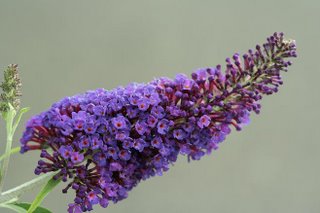
 The Oregon Grape is the Oregon state flower. Its waxy green and sometimes red leaves are like those of the holly bush, and its blue berries ripen in the fall and can be used for cooking.
The Oregon Grape is the Oregon state flower. Its waxy green and sometimes red leaves are like those of the holly bush, and its blue berries ripen in the fall and can be used for cooking.
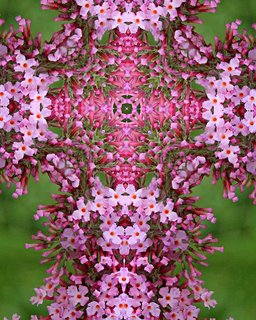 This Butterfly Bush is one of many at Queen of Angels Monastery in Mt. Angel, Oregon. Some buds are open and some are about to open. There is beauty at all stages of life, in both flowers and people.
This Butterfly Bush is one of many at Queen of Angels Monastery in Mt. Angel, Oregon. Some buds are open and some are about to open. There is beauty at all stages of life, in both flowers and people.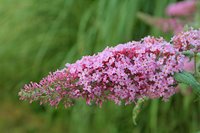
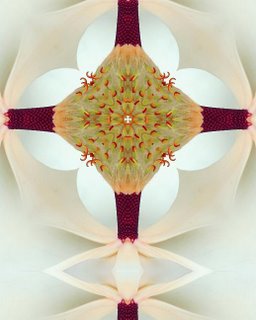 Magnolia petals are so white, so smooth, curved, fragrant, and pure. I love the way the petals enfold and seem to be protecting the stamens in the center. For me, this is an image, of care, nurture, and protection--as well as one of beauty.
Magnolia petals are so white, so smooth, curved, fragrant, and pure. I love the way the petals enfold and seem to be protecting the stamens in the center. For me, this is an image, of care, nurture, and protection--as well as one of beauty.
 If you're a Nebraska farmer, you either grow (1) corn and beans or (2) beans and corn. But if you're a farmer in the Willamette Valley of Oregon you may be growing any of over 90 different crops. One of the biggest of these is grass seed.
If you're a Nebraska farmer, you either grow (1) corn and beans or (2) beans and corn. But if you're a farmer in the Willamette Valley of Oregon you may be growing any of over 90 different crops. One of the biggest of these is grass seed.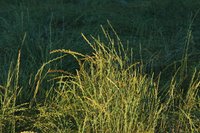
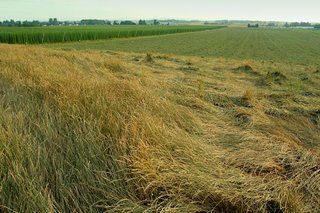
 Most of us call this type of creature a "starfish." But they're not "fish"--they're "Sea Stars." I love learning things. If your mind is already full of everything you need to know, skip the next paragraph. But if you're like me, you'll want to know that:
Most of us call this type of creature a "starfish." But they're not "fish"--they're "Sea Stars." I love learning things. If your mind is already full of everything you need to know, skip the next paragraph. But if you're like me, you'll want to know that:
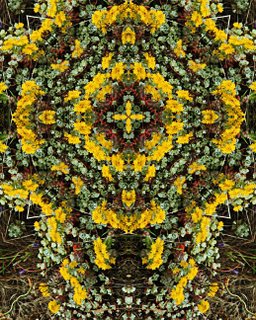 These yellow flowers are growing on a vertical cliff face, right out of cracks in the rock. Their tenacity and adaptability are even more amazing than their beauty. The rock looks solid, but has just enough cracks so that these plants can send out roots that find moisture and nutrients.
These yellow flowers are growing on a vertical cliff face, right out of cracks in the rock. Their tenacity and adaptability are even more amazing than their beauty. The rock looks solid, but has just enough cracks so that these plants can send out roots that find moisture and nutrients.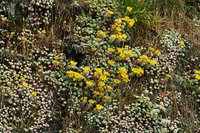
 This morning we leave the sea behind. We actually got a bit teary as we left this scene for the last time yesterday. The ocean is primeval, constantly moving, abundantly alive. Each day we learned about another of its creatures, its movements, its moods. Though we were both brought up as solid products of the land, we feel a connection here we want to maintain, at least in spirit.
This morning we leave the sea behind. We actually got a bit teary as we left this scene for the last time yesterday. The ocean is primeval, constantly moving, abundantly alive. Each day we learned about another of its creatures, its movements, its moods. Though we were both brought up as solid products of the land, we feel a connection here we want to maintain, at least in spirit.
 This cross is made from an ordinary bale of straw as it rests in the morning light in a farmer's field in Mt. Angel, Oregon.
This cross is made from an ordinary bale of straw as it rests in the morning light in a farmer's field in Mt. Angel, Oregon.
 One of the values of researching your family genealogy is the discovery of facts that put the present in perspective. I grew up in a home where alcohol was absolutely forbidden--though Dad did once admit to me that he really liked his Uncle Joe's home-made blackberry wine which was surreptitiously offered to him several times when he was young.
One of the values of researching your family genealogy is the discovery of facts that put the present in perspective. I grew up in a home where alcohol was absolutely forbidden--though Dad did once admit to me that he really liked his Uncle Joe's home-made blackberry wine which was surreptitiously offered to him several times when he was young.
